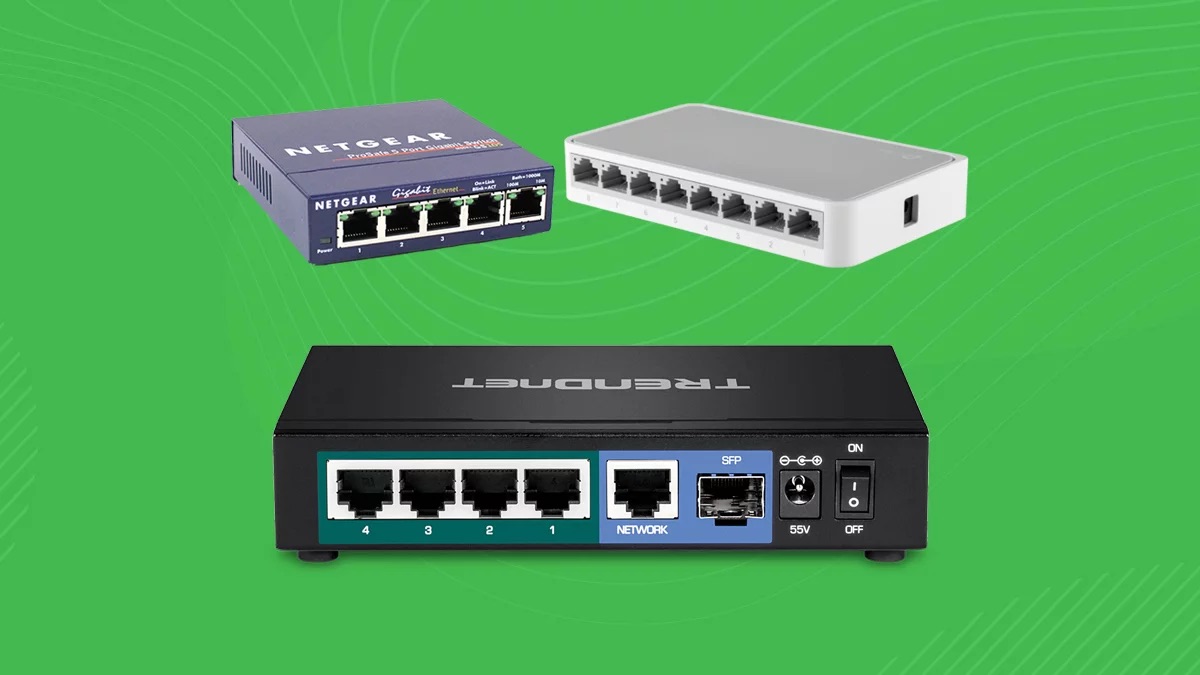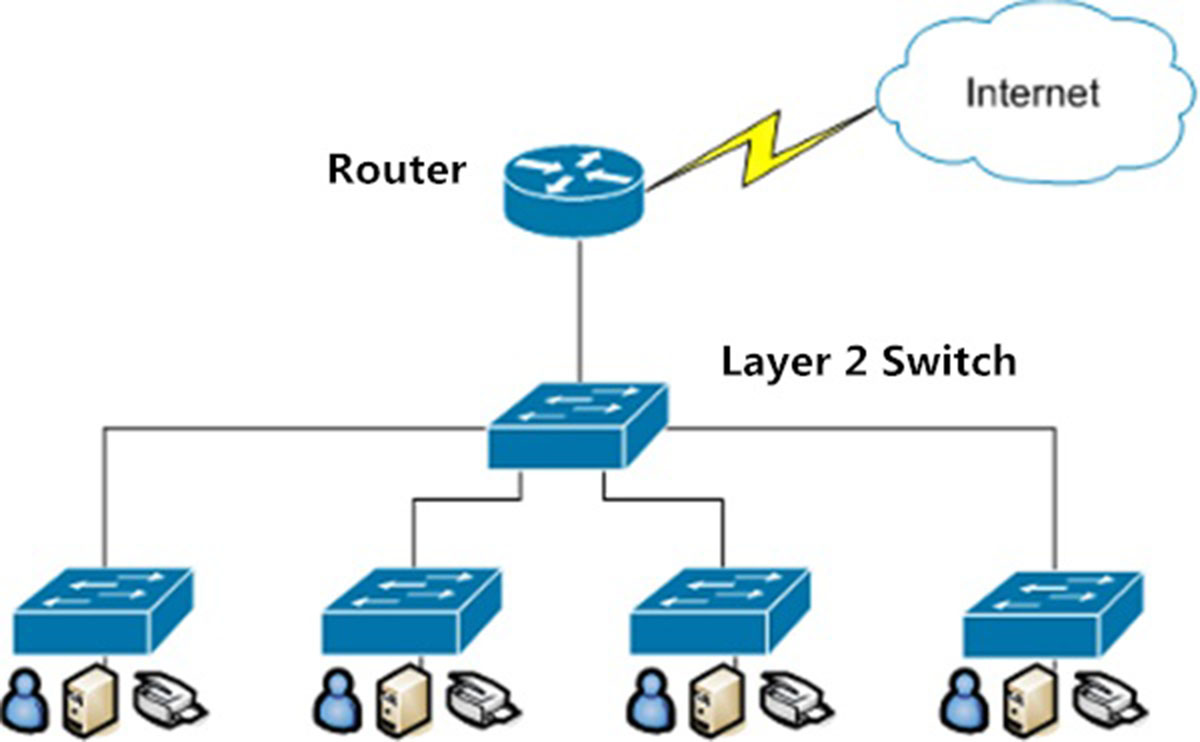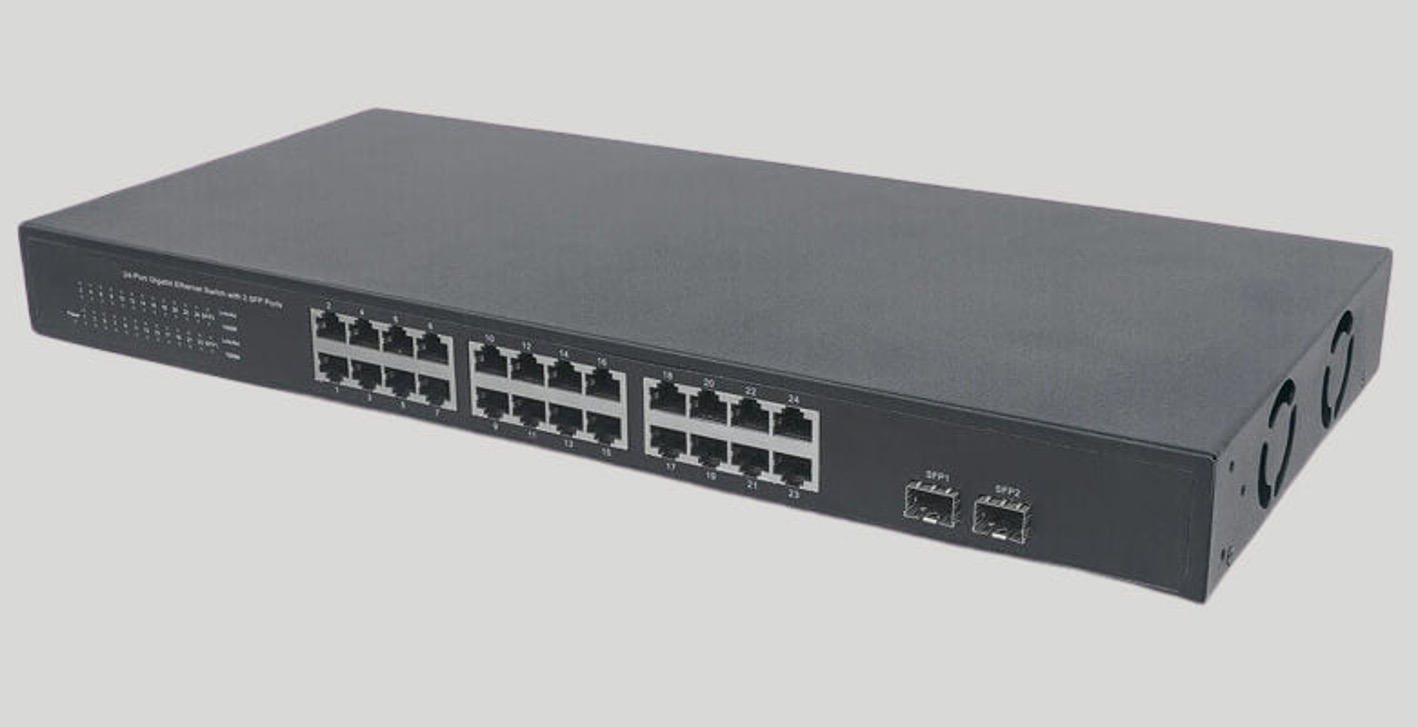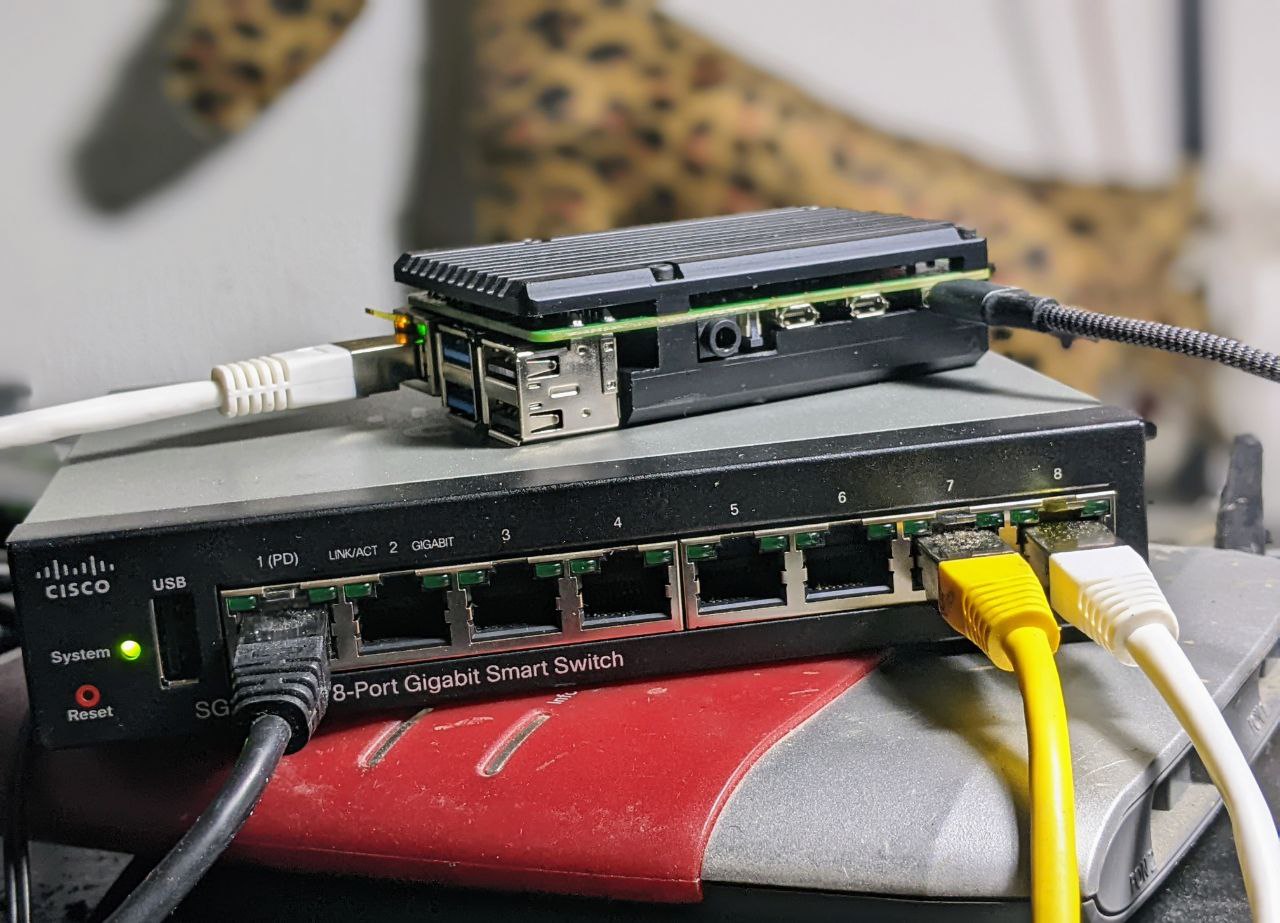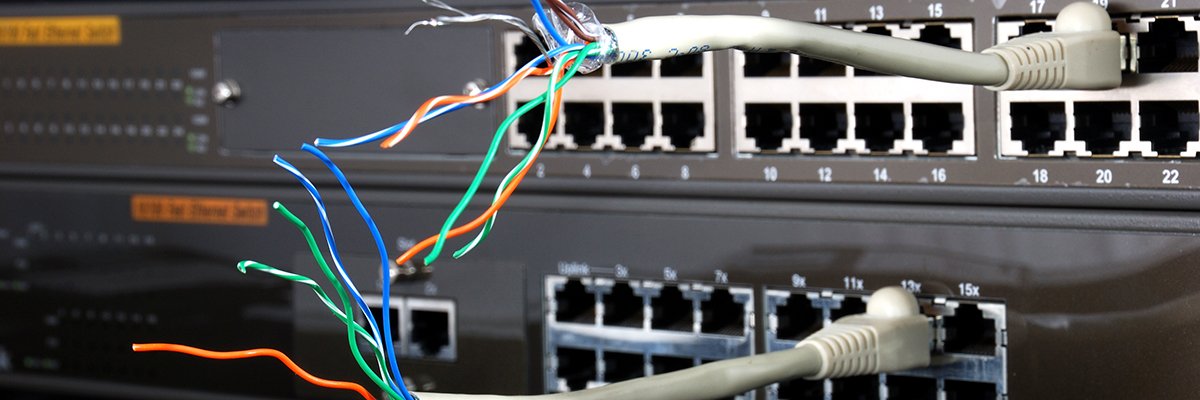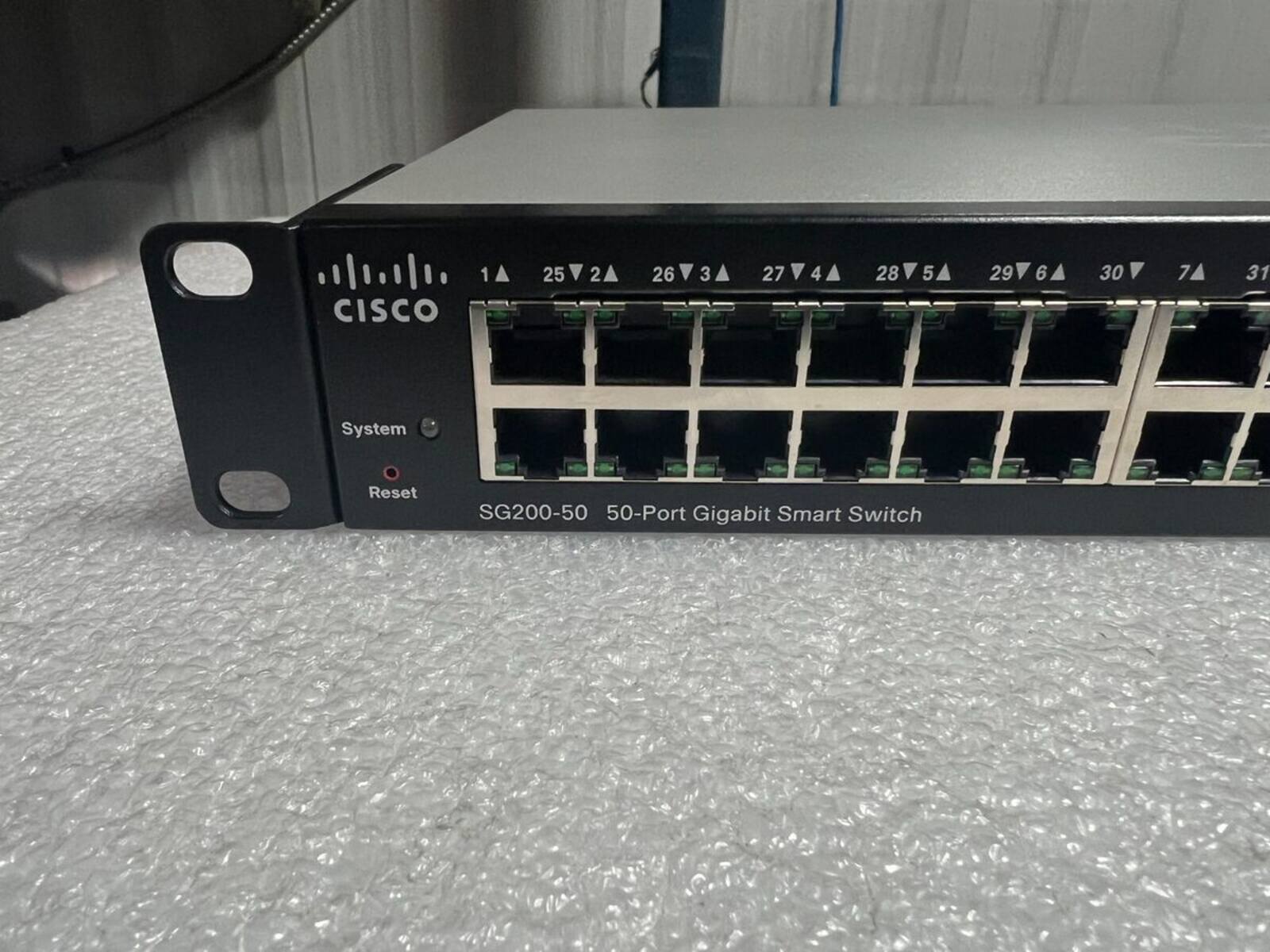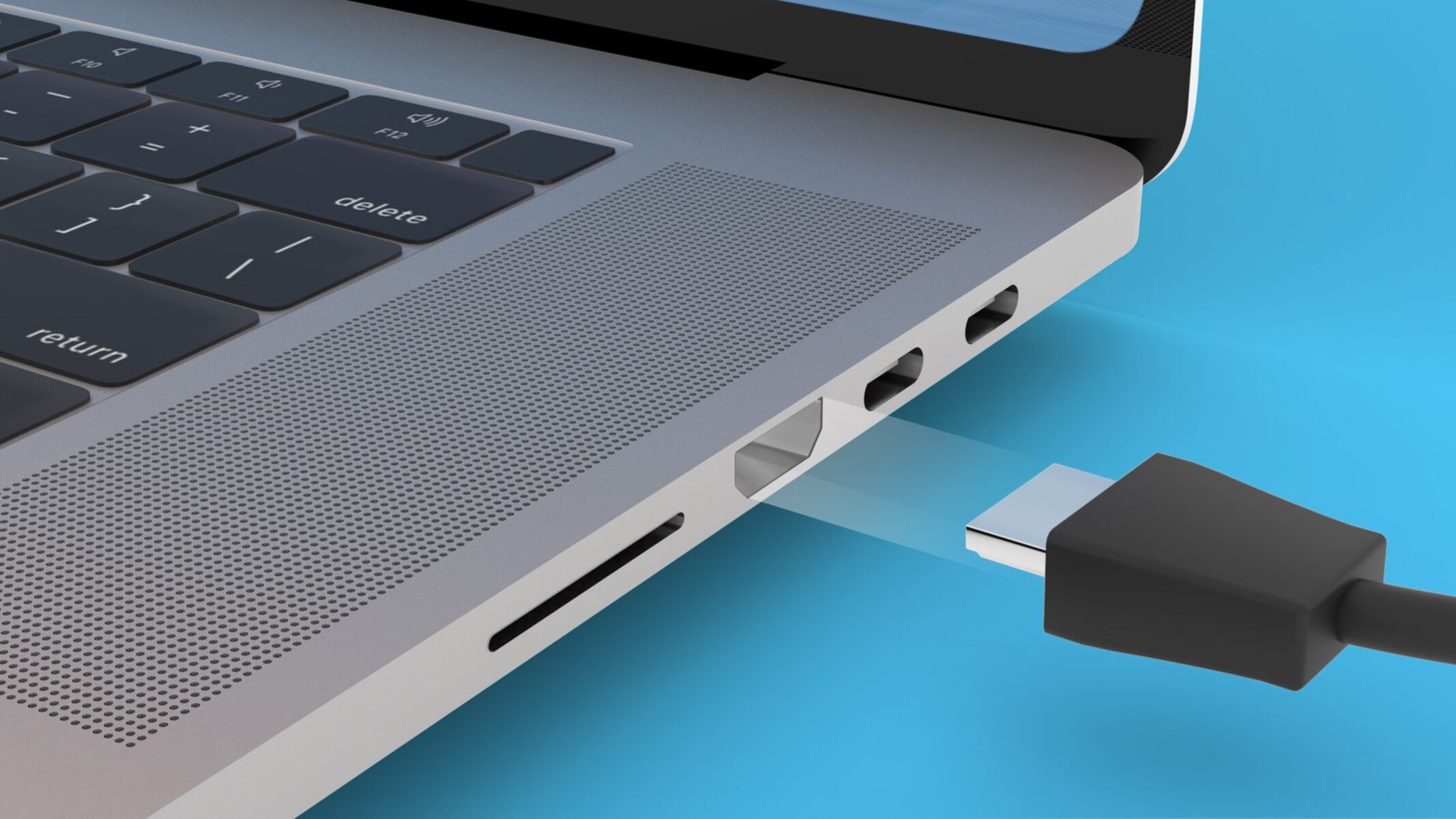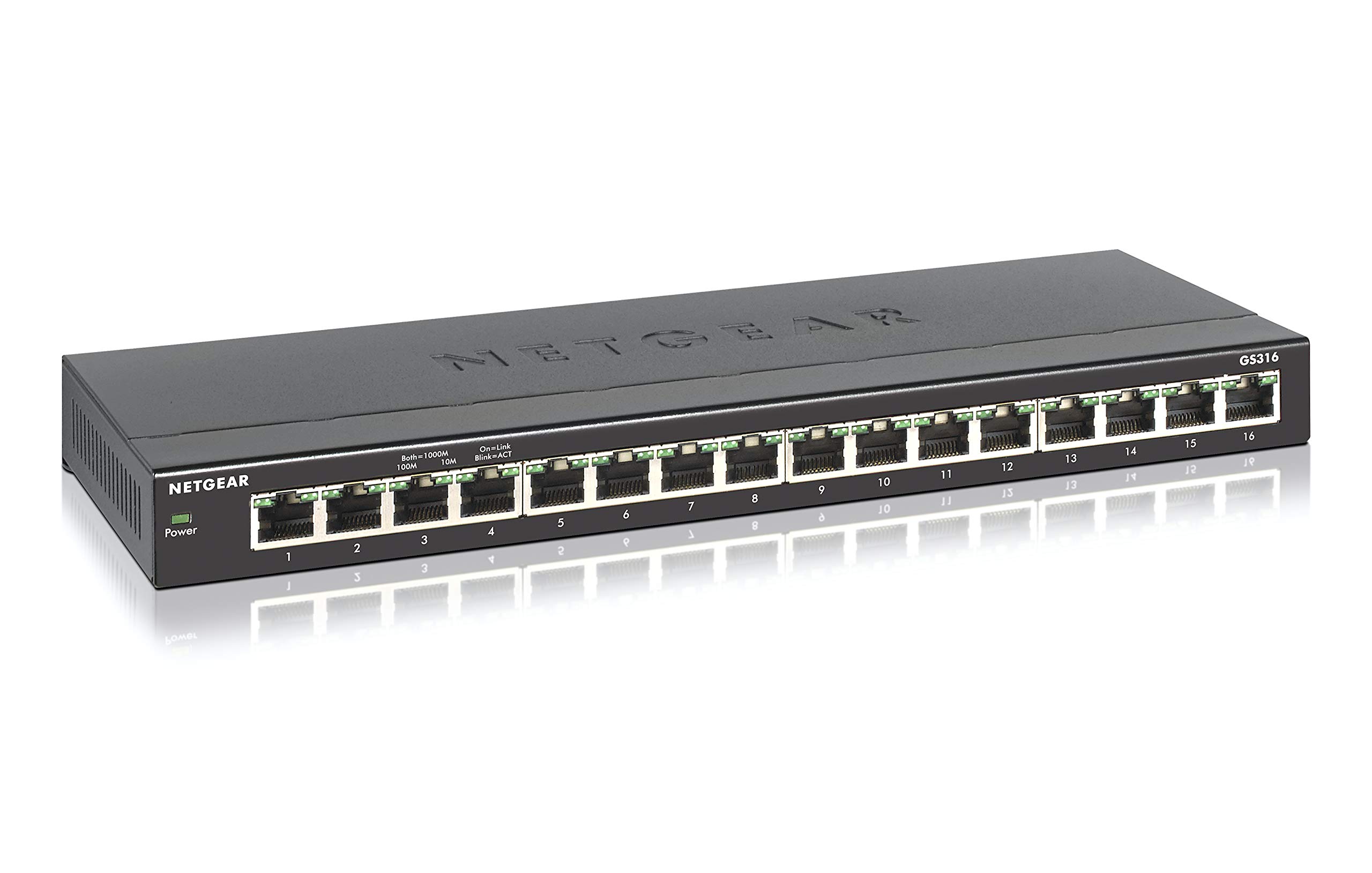Introduction
Welcome to the world of networking, where the seamless flow of data and communication is made possible through the use of sophisticated devices. One such indispensable tool in the realm of networking is the network switch. Whether you are a seasoned IT professional or a curious enthusiast eager to delve into the intricacies of networking, understanding how to use a network switch is a valuable skill in today's interconnected world.
In this comprehensive guide, we will explore the fundamentals of network switches, their types, setup procedures, device connections, management, and troubleshooting. By the end of this journey, you will have a solid grasp of how to harness the power of network switches to optimize your network infrastructure.
The evolution of networking technology has revolutionized the way we connect and interact with each other, both locally and across the globe. As the demand for faster and more reliable data transmission continues to surge, the role of network switches has become increasingly pivotal. Whether in a home environment, a small business, or a large enterprise, network switches form the backbone of efficient data transfer and communication.
As we embark on this exploration, it's important to note that while network switches are powerful tools, they are not without their complexities. However, fear not, as we will navigate through the intricacies together, unraveling the mysteries of network switches in a clear and accessible manner.
So, fasten your seatbelts and get ready to embark on a journey through the fascinating world of network switches. Whether you are setting up a new network or seeking to optimize an existing one, this guide will equip you with the knowledge and skills to make the most of this essential networking component. Let's dive in and unlock the potential of network switches!
What is a Network Switch?
At its core, a network switch is a crucial networking device that operates at the data link layer of the OSI model, facilitating the seamless transfer of data packets between devices within a local area network (LAN). Unlike a hub, which broadcasts data to all connected devices, a network switch intelligently forwards data only to the intended recipient, optimizing network efficiency and security.
Imagine a network switch as a traffic officer at a bustling intersection, directing and rerouting data packets to their respective destinations with precision and speed. This intelligent routing capability minimizes network congestion, enhances data security, and promotes efficient communication among connected devices.
Network switches come in various sizes and configurations, catering to the diverse needs of different network environments. From small, unmanaged switches suitable for home use to enterprise-grade managed switches with advanced features, there is a network switch tailored to every networking requirement.
One of the defining characteristics of a network switch is its ability to create multiple communication paths within a network, enabling simultaneous data transmission between devices. This feature, known as full-duplex communication, allows for bidirectional data flow without the risk of collisions, thereby optimizing network throughput and responsiveness.
Furthermore, network switches offer flexibility in terms of port speeds, with options ranging from traditional Fast Ethernet (10/100 Mbps) to Gigabit Ethernet (10/100/1000 Mbps) and beyond. This adaptability ensures that network switches can accommodate a wide array of devices, from computers and printers to IP cameras and network-attached storage (NAS) systems, without compromising performance.
In essence, a network switch serves as the cornerstone of modern networking, providing the infrastructure for seamless data transfer, resource sharing, and collaborative work environments. Its ability to intelligently manage data traffic, optimize network performance, and enhance security makes it an indispensable tool in the digital age.
As we unravel the intricacies of network switches, we will delve deeper into their various types, configurations, and the essential role they play in establishing robust and efficient network infrastructures.
Types of Network Switches
Network switches come in diverse types, each tailored to specific networking requirements and environments. Understanding the various types of network switches is essential for selecting the most suitable option based on the scale, complexity, and performance demands of a network.
Unmanaged Switches
Unmanaged switches are the simplest form of network switches, typically used in small home or office environments. These switches operate out of the box without the need for configuration, making them ideal for plug-and-play setups. While unmanaged switches offer basic connectivity, they lack advanced features such as VLAN support and traffic prioritization.
Managed Switches
Managed switches provide administrators with granular control over network operations. These switches offer features such as Quality of Service (QoS), VLAN support, port mirroring, and SNMP (Simple Network Management Protocol) for monitoring and managing network traffic. Managed switches are commonly deployed in medium to large-scale networks where customization and optimization are paramount.
Layer 2 Switches
Layer 2 switches operate at the data link layer of the OSI model, focusing on MAC address-based forwarding. These switches are adept at interconnecting devices within a LAN and are capable of segmenting network traffic using VLANs. Layer 2 switches are foundational components in modern network infrastructures, providing efficient and secure data transmission.
Layer 3 Switches
Layer 3 switches, also known as multilayer switches, combine the functionalities of traditional switches with routing capabilities found in routers. These switches can make forwarding decisions based on IP addresses, enabling them to route traffic between different subnets. Layer 3 switches are instrumental in optimizing network performance and scalability, particularly in complex enterprise networks.
Stackable Switches
Stackable switches are designed to be interconnected and managed as a single unit, forming a unified and scalable network infrastructure. These switches offer enhanced flexibility and simplified management, making them well-suited for expanding network deployments. Stackable switches provide high availability and seamless redundancy, ensuring uninterrupted network operations.
PoE Switches
Power over Ethernet (PoE) switches integrate power and data transmission, allowing network devices such as IP phones, wireless access points, and surveillance cameras to receive power over the Ethernet cable. PoE switches streamline network deployment by eliminating the need for separate power sources for connected devices, simplifying installation and maintenance.
By understanding the distinct characteristics and capabilities of these network switch types, network administrators can make informed decisions when designing, implementing, and optimizing network infrastructures to meet the evolving demands of modern connectivity.
Setting Up a Network Switch
Setting up a network switch is a fundamental step in establishing a robust and efficient network infrastructure. Whether you are deploying a new switch or expanding an existing network, the setup process involves several key considerations to ensure seamless integration and optimal performance.
Physical Installation
Begin by selecting an appropriate location for the network switch, taking into account factors such as ventilation, accessibility, and cable management. Mount the switch in a secure and well-ventilated area, ensuring that it is easily accessible for maintenance and troubleshooting. Additionally, organize and route the network cables neatly to maintain a tidy and efficient network environment.
Power and Connectivity
Connect the network switch to a reliable power source using the supplied power adapter or a compatible power over Ethernet (PoE) injector, if applicable. Ensure that the power source meets the voltage and current requirements specified by the switch manufacturer. Next, establish connectivity between the switch and the network infrastructure by connecting Ethernet cables from the switch ports to the corresponding network devices, such as computers, printers, servers, and routers.
Initial Configuration
Upon powering on the network switch, access the management interface using a web browser or dedicated management software, if the switch is a managed or smart switch. For unmanaged switches, no additional configuration is necessary, and they are ready for use upon installation. Managed switches, on the other hand, may require initial setup, including IP address assignment, VLAN configuration, and port settings to align with the network requirements.
Network Segmentation and VLAN Configuration
If network segmentation is desired, configure virtual LANs (VLANs) on the switch to logically segment network traffic and enhance security and performance. Assign specific ports to designated VLANs based on the connectivity requirements of different network devices. VLAN configuration is particularly beneficial in larger networks where isolation and traffic prioritization are essential.
Quality of Service (QoS) Settings
For managed switches, consider configuring Quality of Service (QoS) settings to prioritize certain types of network traffic, such as voice or video data, over others. QoS settings help optimize network performance by ensuring that critical data packets receive preferential treatment, minimizing latency and enhancing the overall user experience.
By meticulously following these steps and considerations, network administrators can effectively set up network switches to create a resilient, high-performance network infrastructure that aligns with the specific needs and demands of the connected devices and users.
Connecting Devices to a Network Switch
Once the network switch is properly set up, the next crucial step is to connect devices to the switch, enabling seamless communication and data exchange within the network. Whether it’s computers, printers, servers, or other networking peripherals, establishing the connections in a structured and efficient manner is essential for optimizing network performance and accessibility.
Ethernet Connectivity
Utilize Ethernet cables to establish connections between the network switch and the various devices within the network. Ensure that the Ethernet cables are of appropriate length, properly terminated, and capable of supporting the desired data transmission speeds. When connecting devices to the switch, adhere to industry-standard color-coding schemes for Ethernet cables to maintain consistency and clarity in network management.
Port Selection
Select the appropriate switch ports for connecting different devices based on their networking requirements. For devices that demand high-speed data transfer, such as file servers or network-attached storage (NAS) systems, utilize Gigabit Ethernet ports to maximize throughput. Conversely, devices with lower data transmission needs, such as printers or IP cameras, can be connected to Fast Ethernet ports without sacrificing performance.
Structured Cabling
Employ structured cabling practices to ensure a tidy and organized network environment. Label the Ethernet cables and switch ports to clearly identify the connected devices, simplifying future maintenance, troubleshooting, and expansion activities. Additionally, adhere to cable management best practices to minimize cable clutter and prevent accidental disconnections or damage to the cables.
Power over Ethernet (PoE) Devices
If the network switch supports Power over Ethernet (PoE), connect PoE-compatible devices, such as wireless access points, IP phones, and surveillance cameras, directly to the PoE-enabled switch ports. PoE eliminates the need for separate power sources for these devices, simplifying installation and ensuring uninterrupted operation, particularly in areas where access to power outlets may be limited.
Network Segmentation
Consider the network segmentation requirements and VLAN configurations when connecting devices to the switch. Assign devices to specific VLANs based on their functional roles, security requirements, or traffic isolation needs. This approach facilitates efficient traffic management, enhances network security, and streamlines the implementation of network policies and access controls.
By meticulously connecting devices to the network switch and adhering to best practices in cabling and port selection, network administrators can establish a resilient and well-organized network environment capable of meeting the diverse connectivity needs of modern digital workplaces and infrastructures.
Managing a Network Switch
Effective management of a network switch is essential for maintaining optimal performance, security, and reliability within a network infrastructure. Whether it’s configuring settings, monitoring traffic, or implementing security measures, proactive management practices are pivotal in ensuring that the switch operates at its full potential while aligning with the overarching goals of the network.
Accessing the Management Interface
Managed switches are equipped with a web-based management interface or dedicated management software that allows administrators to configure and monitor switch settings. Access the management interface using a web browser or the provided management software, and authenticate with the appropriate credentials to gain access to the switch’s configuration and monitoring features.
Configuration and Customization
Utilize the management interface to configure switch settings, including port configurations, VLAN assignments, Quality of Service (QoS) parameters, and security features. Tailor the switch’s behavior to align with the specific networking requirements, ensuring that it effectively supports the diverse devices and applications within the network.
Monitoring Network Traffic
Employ the switch’s monitoring capabilities to track network traffic, identify potential bottlenecks, and analyze data patterns. Monitoring tools provide valuable insights into network utilization, enabling administrators to optimize network resources, troubleshoot performance issues, and plan for future capacity upgrades based on observed traffic patterns.
Implementing Security Measures
Enhance network security by implementing access controls, port security measures, and authentication protocols through the switch’s management interface. Configure port-based access control lists (ACLs), enable port security features to prevent unauthorized access, and enforce strong authentication mechanisms to safeguard the network against unauthorized intrusion and data breaches.
Firmware Updates and Maintenance
Regularly update the switch’s firmware to ensure that it remains equipped with the latest features, performance enhancements, and security patches. Scheduled maintenance activities, such as firmware updates and configuration backups, are critical for mitigating potential vulnerabilities and ensuring the long-term stability and security of the network switch.
Remote Management and Automation
Explore remote management capabilities and automation tools that streamline switch management tasks. Remote management features enable administrators to monitor and configure switches from a centralized location, simplifying network administration and troubleshooting. Automation tools facilitate the implementation of consistent configurations and policies across multiple switches, reducing manual configuration errors and enhancing operational efficiency.
By embracing proactive management practices and leveraging the robust features offered by network switches, administrators can orchestrate a resilient and agile network infrastructure that adapts to evolving demands, prioritizes security, and delivers seamless connectivity for users and devices alike.
Troubleshooting Network Switch Issues
Network switch issues can disrupt the flow of data, impede communication, and hinder productivity within a network environment. Effectively troubleshooting these issues is essential for swiftly identifying and resolving potential problems, ensuring that the switch operates optimally and maintains seamless connectivity for connected devices.
Diagnostic Tools and Logs
Utilize the diagnostic tools and logs provided by the switch to identify potential issues. These tools may include port statistics, error logs, and performance monitoring features that offer insights into network anomalies, connectivity issues, and potential hardware or software malfunctions. Analyzing these diagnostic resources can help pinpoint the root causes of switch-related problems.
Physical Connectivity Checks
Conduct thorough physical connectivity checks to ensure that Ethernet cables are properly connected, terminated, and free from damage. Verify that the connected devices are powered on and functioning as expected. Physical inspection of the cabling and device connections is crucial for identifying and addressing potential issues related to loose connections, cable damage, or power supply disruptions.
Port and VLAN Configurations
Review the switch’s port configurations and VLAN assignments to ensure that devices are correctly connected to the designated ports and VLANs. Misconfigured port settings or VLAN assignments can lead to connectivity issues, traffic segmentation problems, and communication disruptions. Align the port and VLAN configurations with the network requirements to facilitate seamless device connectivity.
Firmware and Software Updates
Ensure that the switch’s firmware and management software are up to date with the latest releases and security patches. Outdated firmware or software may contain vulnerabilities or compatibility issues that can manifest as operational disruptions or performance degradation. Regularly applying firmware updates and software patches is critical for maintaining the stability and security of the switch.
Performance Optimization
Analyze network performance metrics and utilization patterns to identify potential bottlenecks, congestion points, or bandwidth limitations within the network. Adjust Quality of Service (QoS) settings, optimize traffic prioritization, and consider network capacity upgrades to alleviate performance-related issues and ensure efficient data transmission across the network.
Hardware Health Checks
Conduct hardware health checks to assess the physical condition of the switch, including fan operation, temperature levels, and power supply status. Overheating, fan failures, or power supply issues can lead to switch malfunctions and operational disruptions. Regular hardware inspections help preemptively address potential hardware-related issues.
By systematically troubleshooting network switch issues through diligent diagnostics, proactive maintenance, and attentive monitoring, administrators can swiftly address operational disruptions, maintain network resilience, and uphold a seamless connectivity experience for users and networked devices.
Conclusion
Congratulations on completing this comprehensive guide to understanding and utilizing network switches. Throughout this journey, we’ve delved into the fundamental concepts, types, setup procedures, device connections, management, and troubleshooting aspects of network switches. By gaining insights into these critical areas, you are well-equipped to harness the power of network switches and optimize your network infrastructure.
Network switches serve as the linchpin of modern networking, enabling seamless data transfer, resource sharing, and collaborative work environments. Their ability to intelligently manage data traffic, optimize network performance, and enhance security makes them indispensable tools in today’s interconnected world.
Understanding the distinct types of network switches, from unmanaged switches suitable for simple setups to advanced managed switches with granular control, empowers network administrators to select the most suitable option based on the scale, complexity, and performance demands of their networks.
Setting up and managing a network switch involves meticulous planning, thoughtful configuration, and proactive maintenance. From physical installation and initial configuration to monitoring network traffic and implementing security measures, effective management practices are pivotal in ensuring that the switch operates optimally and aligns with the overarching goals of the network.
Furthermore, troubleshooting network switch issues requires a systematic approach, utilizing diagnostic tools, physical connectivity checks, firmware updates, performance optimization, and hardware health assessments to swiftly identify and resolve potential problems. By diligently addressing operational disruptions and maintaining network resilience, administrators can uphold a seamless connectivity experience for users and networked devices.
As you continue to explore the dynamic landscape of networking, remember that network switches are not static entities; they evolve alongside technology and networking demands. Embracing continuous learning, staying informed about emerging networking trends, and adapting network switch strategies to meet evolving demands will position you at the forefront of network infrastructure optimization.
Thank you for embarking on this enlightening journey through the realm of network switches. Armed with this knowledge, you are well-prepared to navigate the complexities of networking and optimize the performance and reliability of your network infrastructure.







